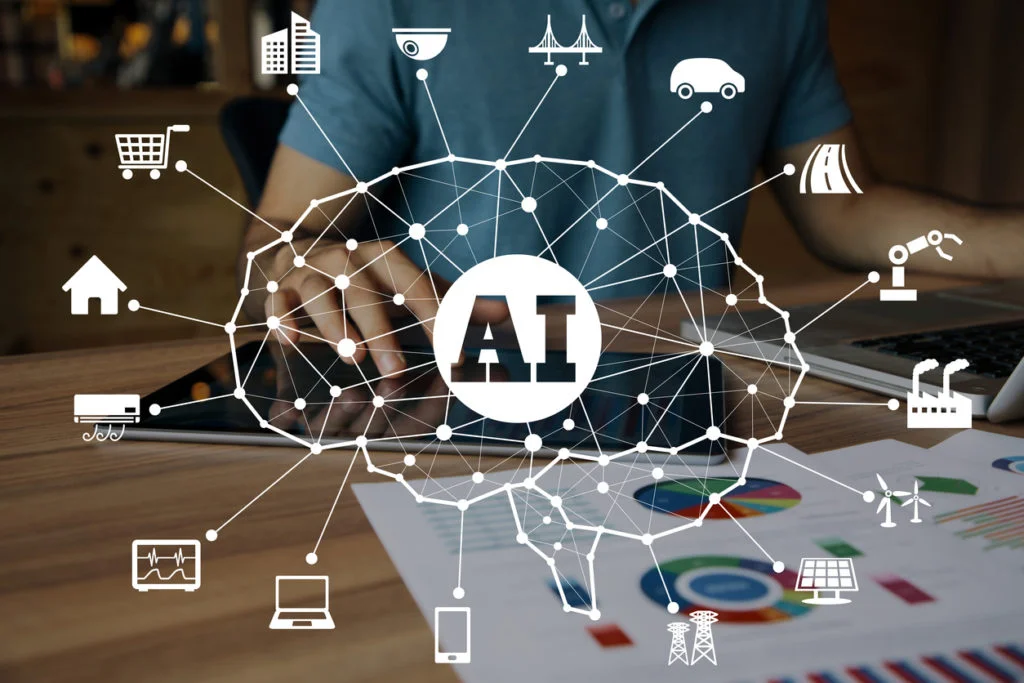This post is the fourth entry in our series on AI application patterns across multiple industries.
In this post, we will discuss how AI and machine learning is used to develop a unique profile of each individual that is then used to customize and personalize the user experience.
What is AI-Driven Personalization?
It is critical for businesses to understand the needs of their customers/users. Additionally, they need to move away from a one-size-fits-all approach onto a user experience that is more personalized; this will help to yield better results.
However, several challenges need to be overcome to make this transition; the most significant of these challenges is the time and effort required to make the shift to a more personalized user experience. A lot needs to be done by the businesses wanting to make the move including mapping out individual journeys, developing marketing-driven personas, identifying the key moments, and then working around those factors.
When it comes to truly understanding the individual users and their needs, marketing-driven personas can often be flawed. This means that the traditional way of personalizing the user experience or customer journey wouldn’t get you far. The only way that can truly bridge the gap is by using artificial intelligence (AI). Following are two ways AI is aiding the personalization process.
1. Advancement of Narrow AI
We’ve had AI for almost three decades now. However, advances in AI in the past decade or so have helped to develop cognitive systems with the ability to learn, understand, reason, and interact. For businesses looking to enhance their marketing efforts or the customer journey, a relevant area is the advancement of “narrow AI”.
What is narrow AI? It is the application of the general algorithms and concepts of AI to particular, closely-defined problem areas for optimal-value results. In recent years, there has been rapid progress in narrow AI. There was a need to understand and then code the algorithms only a decade ago. However, this changed about five years ago when AI and ML algorithms started to be commodified and moved to the cloud.
What was the benefit of this? it has allowed companies to drive real business value from the technology. Image recognition is a common application area of narrow AI. It allows mapping an image’s key physical points against a ‘learning network’ that provides the possible meaning of those points.
This can be used in digital marketing for automatically tagging images in a digital asset management (DAM) software. Another key use in digital marketing is optimization. Narrow AI can help to optimize conversion by allowing you to determine pricing, targeted offers, promotions etc.
Having far greater value that simply giving customers a ‘good offer’, personalizing the user experience/customer journey to understand the user and predict their needs can help create loyal customers.
This is because personalizing the user experience/customer journey with AI allows businesses to create meaningful connections that increase engagements and are based on much more than just a ‘good offer’. Using marketing-driven personas to create great user experiences and customer journeys can be effective. However, they alone are often not enough. Persona recognition may be needed too.
2. Persona Recognition
Image recognition generates a match through the use of key physical characteristics. On the other hand, persona recognition uses key behavioral characteristics to do the same. Persona recognition begins with the use of AI to perform data analysis and discover behavioral affinities’ clusters. These are the correlations among users that show similar patterns of interactions and decision making.
Ultimately, these patterns are converted into insight-driven personas that can be used for targeted activities in the next stage of the process; this is the stage where it is possible to observe and match users in real time against the personas that are inferred.
The final stage of persona recognition involves the use of AI, based on experimentation and observation, to come up with content, paths, and other user experience parts that AI finds to be the best for each persona. This could either be driven completely by AI or it could be experimentation controlled by humans.
How AI is Helping Transform the Digital Experience Through Personalized Intelligence
Creating and delivering personalized content and user experiences not only makes users/customers feel that they are understood, but it also makes them feel valued. This can be immensely powerful in creating loyal customers. Therefore, personalizing content and user experiences is invaluable and you can do that at scale with AI technology. Following are some ways AI is helping transform the digital experience through personalized intelligence.
1. AI-Powered Content Personalization
More than half of content marketers today struggle with personalization. This is a cause of concern since customers today are increasingly wanting experiences with brands that are unique and personalized. Customers want to build deeper connections with the businesses they patronize, and marketers must take a serious note of this.
The good news is that AI-powered solutions make it easier to develop content marketing strategies that align with the unique needs of an individual customer. They do this by automating the type of content, the communication channels, and even the timing of content delivery. Additionally, AI enables marketers to create customized customer experiences by allowing them to perform in-depth analysis of various data patterns. This is known as predictive personalization.
In predictive personalization, the available data is analyzed and tools for customer profiling are used to automatically optimize conversions by adapting content in real-time. Powered by ML algorithms, this enables a high level of personalization.
An example of this would be the use of customer data, such as browsing history, flights and hotels booked in the past, and social media activity, by a travel company to come up with locations and type of activities that are likely to appeal each customer and then customizing marketing messages based on this.
AI allows you to be smart with your ads. This means that you can create smarter and more personalized digital ads and campaigns by using the data made available by the AI technology. Algorithms and big data are used by AI and ML to create better insights for your marketing team; they study social media profiles, keyword queries, and other relevant data online to come up with these insights.
For any marketer that utilizes ad spend to promote their company, achieving ad efficiency is critical. Luckily, achieving this efficiency has become easier thanks to AI/ML- based platforms such as Google AdWords and Facebook Ads Manager.
For example, you can use optimize the delivery of your ads prior to the launch of a campaign by setting goals with Facebook’s Ad Manager. The course for the delivery of your ads will be charted by these goals from conversions to reach.
Facebooks Ads can help to reduce your cost per click (CPC) by allowing you to deliver ads to users that are likely to click through instead of targeting ads to users that have a 50/50 chance of converting. Google Ads big strategies are another example of AI and ML in paid media that help to optimize your cost per click. Here, ML tools can be used to analyze the performance of ads, get recommendations, and make any alternations that are needed. Ultimately, this helps to reduce/optimize your cost per click of Google Ads.
2. Personalized Customer Service
Personalized customer service entails much more than simply sending out an automated message or mail that addresses a customer by name. To personalize customer service, you not only need to capture the attention of the customer, but you also need to an create authentic engagement that is relevant at every stage of the customer journey.
A lack of trust and personalization has resulted in over 40 percent of consumers in the U.S abandoning a brand and moving onto a competitor. The implementation of innovative approaches that deeply resonate with customers is needed by organizations to create a truly personalized customer experience; this is a user experience that leaves customers feeling appreciated and value.
The advances in ML tools and algorithms in the past few years have enabled AI-solutions, such as chatbots and virtual assistants, to learn how to provide customer service, including learning the ways to respond to and engaged with customers. But, can these solutions help deliver personalized customer experiences? Yes, they can.
You can use AI to harness large volumes of data from multiple sources and find patterns in customer behavior that allows you to perform mass personalization. In order to create a specific profile of each customer, AI utilizes the customer’s interaction history. This helps it to find patterns in customer behavior which in turn allows the delivery of highly personalized experiences to increase customer engagement and improve customer experience.
3. AI-Recommendation Systems
Over 40 percent of the people that shop online would prefer shopping on a website that makes personalized recommendations. Products tailored to the preferences of individual customers can be offered on websites using recommendation engines. A real-world example of this is Amazon’s recommendation engine that helps to generate 35% of all of the company’s sales.
A system that filters information about users, an AI recommendation engine can make suggestions to users based on the preferences, interests, and past behavior. Based on this customer profile, the specific interests/ preferred items of a specific user can be predicted.
Recommendations systems make the customer journey and user experience seamless by allowing customers to find the items they want easily and quickly. On the other hand, conversational AI platforms, such as chatbots and virtual assistants, are helping businesses to reduce their customer service costs by as much as 30 percent.
Real-World Examples of AI Use to Improve Personalization
Following are some real-world examples of how the use of AI is helping to personalize user experiences and customer journeys.
1. Thread
Thread, a fashion company based in the UK, makes personalized recommendations about clothing to each customer by utilizing AI. Data is acquired from customers through style quizzes. Additionally, personalized recommendations are sent to customers each week and they can vote these recommendations up or down.
This allows the company to find patterns in customer’s preferences and likes which in turn helps to make personalized recommendations. The more data the company has about a customer, the better recommendations it can make to them.
2. Hilton Hotels
Hilton Hotels personalizes that experiences of its guests to make them more enjoyable by using Connie, a robot concierge. Standing a little over a foot tall in the lobby, the robot not only greets incoming guests, but it also answers their questions. Connie uses its natural language processing (NLP) capabilities to make personalized recommendations to guests about the places to visit and the eateries to try.
3. Macy’s
An smartphone-based AI assistant, the ‘On Call’ virtual assistant of Macy’s helps to personalize the in-store experience for customers. After they enter the store, customers can use their phone to start chatting with Macy’s digital assistant. The virtual assistant directs the shopping experience of customers by asking them questions.
Based on the answers of the customers, the On Call assistant provides products recommendations and directions to their location in the store. Additionally, if the virtual assistant finds that the customer is getting frustrated, it will alert a human customer service rep to take control of matters. This makes the assistant a truly remarkable technology.
Final Word
By personalizing the interaction and user experience at every stage of the customer journey, AI and ML based tools can increase customers’ engagement with a brand and deliver individualized experiences that can create customer loyalty. All of this benefits the bottom line.
In the next article in this series, we will look at how AI can be used to analyze large volumes of data to find meaningful patterns and anomalies.









